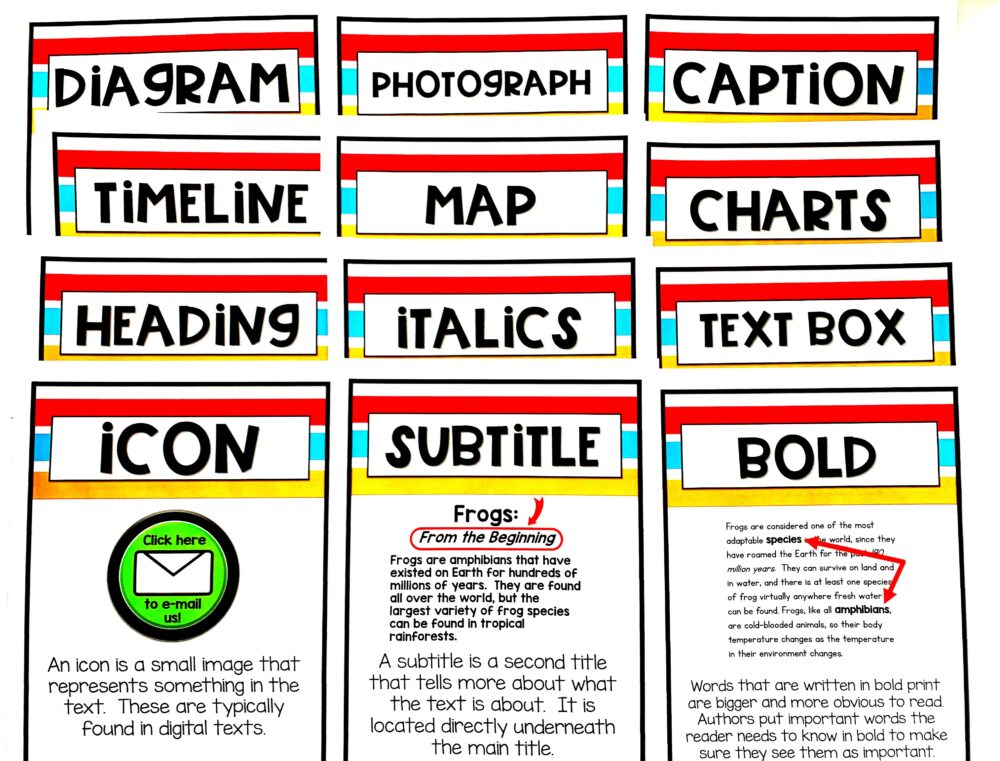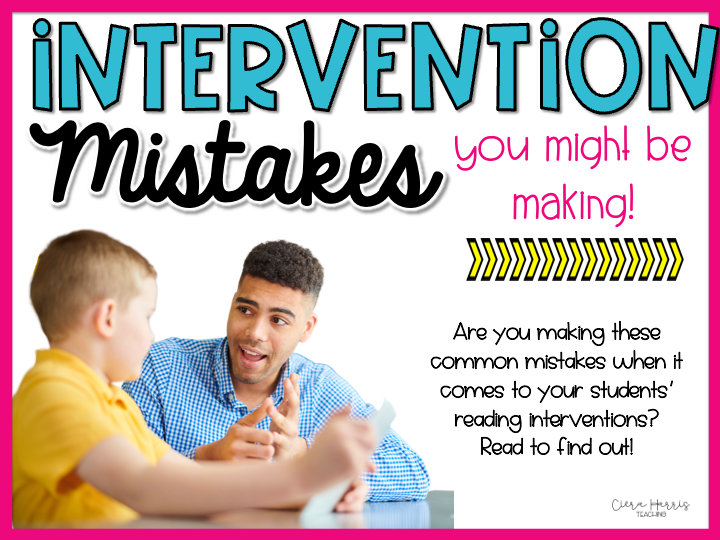Despite it being one of students’ favorite genres to read, nonfiction text can be very tricky to comprehend. Between the new vocabulary, text structure, and visual features, nonfiction brings a completely different level of comprehension to the table. When students understand how nonfiction is different and what the components are that make it such a unique genre, they are more equipt to handle the genre. This includes nonfiction features! Check out these tips for teaching nonfiction text features to help your students understand them better!

Tip #1:
The first thing students need to know about nonfiction features is that they are always used very strategically. They are not simply thrown into a text to make it look fancier or because the text has to have them. They also don’t just give us random tidbits of information. The text features are connected to the topic, the headings, chapter titles, and relevant facts within the text. When students understand this, they will see the need to stop and analyze the features just as much as the text itself.
Text Feature Tip #2:
One unique way to help students better understand text features is to put them into the author’s shoes. It’s important for students to truly see the process of writing the text (or in their case, reading) and then choosing which features to include. Having students analyze a text and become the author to complete this step is a unique way to allow students to understand features on a deeper level.
Tip #3:
Connect features to text structure. It makes perfect sense! If I were to say I was reading a nonfiction text with the structure of sequencing, which text feature(s) automatically come to mind? A timeline! What if I said I was reading a nonfiction text with the structure of descriptive – what text features would come to mind then? You should be saying features such as photographs, diagrams, and captions. I could do the same for compare and contrast structure – charts and graphs help show comparisons! Each structure has but isn’t limited to, specific types of text features that are a more obvious choice to use in that specific type of writing. Having students understand this will not only support their understanding of text features but structures of course as well.
Looking for some fun, hands-on activities to help engage students when teaching text features? Check out this complete unit! 5 days of lesson plans, small group and whole group activities, a craft, a center, and much more! You can grab the text feature unit in my store today!

Text Feature Tip #4:
Where does the information come from? When we teach nonfiction, one of the focuses we review many times over is telling the students to read the entire page, not just the paragraphs. Of course, by that, we mean the features. One way to help support this and encourage students to read the text features is to help them understand that information comes from both places. You can play a game called Text Or Feature where the teacher gives a fact and students have to determine where the information came from. By doing this, you are showing students that not only does the text have valuable information, but so do the text features.
Tip #5:
Focus on the characteristics of the text features. Many times we show students one feature after another but never really break down the common characteristics of how all of the “X” (insert specific text feature here) are alike. Each graph we show them is going to look different to them so it may be hard for them to understand that in fact, they are all graphs. But if we focus on the characteristics of the text features and teach students to look out for those – it will be easier for the students to identify the features by sight. Graphs always have numbers, axis, lines, or bars. An index will always have a list of random words – no sentences. It will also have random numbers after each word.
It’s these characteristics that help students distinguish the features from one another – but then also collectively understand how they (the different-looking features of the same kind) are all the same feature.

Finally, I leave you with these specific strategies to help students understand nonfiction features:
-
Pre-read the text with text features – Check out my favorite pre-reading strategy for nonfiction: THIEVES! Plus grab an amazing freebie!
-
Focus on ‘reading’ features individually – what information can you pull from each feature?
-
Try having students complete or finish a given text feature. Take a text and choose a text feature to support the text. Allow the students to use the information in the text and elsewhere to complete the text feature.
-
Focus on the WHY – why is this specific feature being used here?
-
Allow students to choose which feature fits best. Read short nonfiction texts and give students options. Which text feature would best fit and why?
Want to save these tips for later? Make sure to pin the image below!






